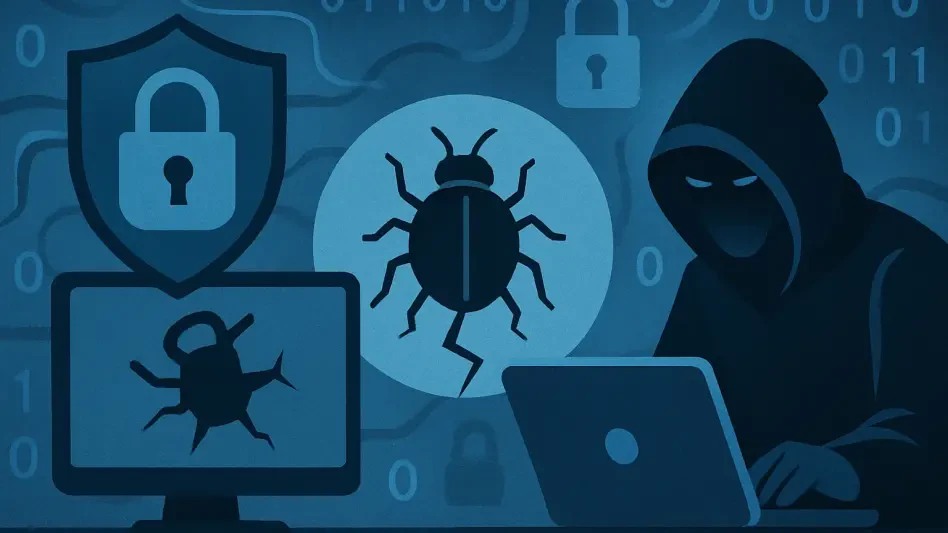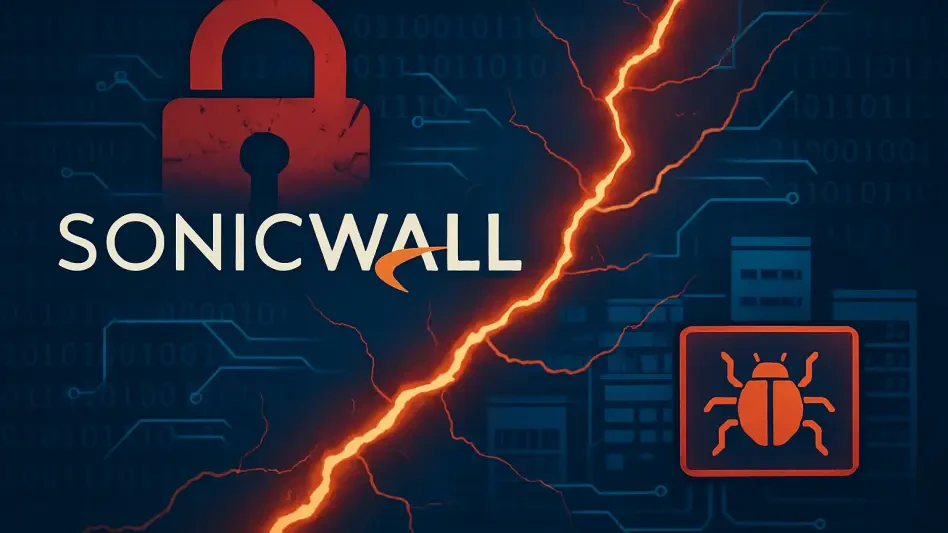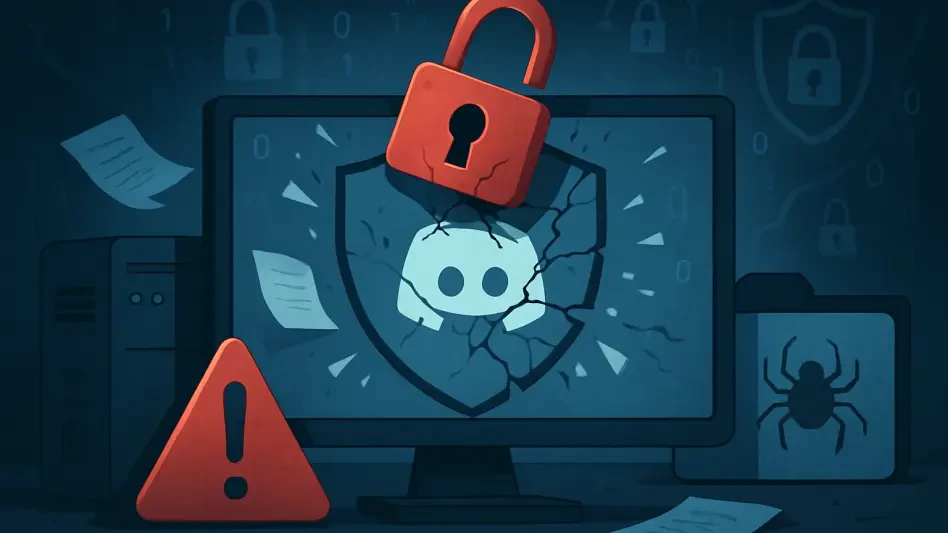In an era where digital connectivity underpins nearly every aspect of daily life, the cybersecurity landscape has become a relentless battleground, with threats evolving at an unprecedented rate, as recent reports of a zero-day vulnerability in Google Chrome and a record-shattering 22.2 Terabits per second (Tbps) Distributed Denial-of-Service (DDoS) attack have sent shockwaves through the tech community. These incidents, drawn from a comprehensive cybersecurity update, serve as stark reminders of the sophisticated and diverse dangers lurking in the digital realm. From software flaws exploited for espionage to massive assaults capable of crippling internet infrastructure, the scale of these challenges demands immediate attention from individuals, corporations, and governments alike. This exploration delves into the heart of these critical developments, unpacking their technical intricacies and broader implications for a world increasingly reliant on secure technology. By examining the latest wave of cyber incidents, a clearer picture emerges of the persistent vulnerabilities, innovative attack methods, and real-world consequences that define the current state of digital security. The urgency to adapt and fortify defenses has never been more apparent, as adversaries continue to refine their tactics to exploit every possible weakness.
Unseen Flaws: The Threat of Zero-Day Vulnerabilities
Zero-day vulnerabilities stand as one of the most insidious threats in cybersecurity, representing flaws unknown to software vendors until they are already under attack. A striking example lies in the recent discovery of a Chrome zero-day flaw, identified as CVE-2025-10585, which targets the V8 JavaScript engine. This vulnerability enables remote code execution, allowing attackers to infiltrate systems with devastating precision. Reports indicate that this flaw has been exploited to steal cryptocurrency wallets and facilitate espionage operations, showcasing the diverse and high-stakes motives driving such attacks. The fact that a browser used by billions worldwide can harbor such a critical weakness underscores the pervasive risk these vulnerabilities pose to both individual users and large-scale organizations. Software giants like Google face immense pressure to respond swiftly, yet the gap between discovery and patch deployment often leaves systems exposed to exploitation.
Equally concerning is a parallel zero-day issue affecting Cisco’s IOS and IOS XE software, cataloged as CVE-2025-20352. This flaw has been actively exploited to trigger denial-of-service conditions or execute malicious code with root-level privileges, potentially compromising entire network infrastructures. The implications are profound, as Cisco’s technology underpins countless enterprise and critical systems globally. Rapid patch releases have been issued, but the challenge remains in ensuring timely updates across diverse and often complex environments. This situation highlights a broader systemic issue: even the most robust platforms are not immune to hidden defects, and the speed of attacker innovation often outpaces defensive responses. Organizations must prioritize automated update mechanisms and vigilant monitoring to minimize exposure during these critical windows of vulnerability.
Overwhelming Power: The Rise of Massive DDoS Attacks
Among the most alarming cybersecurity events recently documented is a DDoS attack that reached an unprecedented peak of 22.2 Tbps, setting a new benchmark for destructive capacity. This staggering volume of traffic, orchestrated to flood and incapacitate targeted systems, demonstrates the immense firepower now accessible to threat actors. Unlike smaller-scale attacks that might disrupt individual services, this magnitude of assault can overwhelm entire segments of internet infrastructure, affecting millions of users and countless businesses. The event serves as a grim indicator of how far cyber warfare has advanced, with attackers leveraging vast botnets and sophisticated coordination to achieve their goals. Such incidents expose significant gaps in the ability of current defenses to handle extreme loads, raising urgent questions about the resilience of digital ecosystems.
The broader impact of a 22.2 Tbps DDoS attack extends beyond mere technical disruption, as it threatens the stability of critical services that societies depend on, from financial systems to emergency response networks. This particular attack has sparked intense discussions among cybersecurity experts about the need for enhanced protective measures, such as distributed mitigation strategies and increased capacity for traffic absorption. Furthermore, it points to the involvement of well-resourced adversaries, potentially state-sponsored or organized crime syndicates, who possess the means to execute such large-scale operations. Addressing this threat requires not only technological innovation but also international collaboration to dismantle the networks fueling these attacks. The incident is a clarion call for stakeholders to reassess preparedness and invest in infrastructure capable of withstanding the next generation of cyber assaults.
Shifting Tactics: The Evolution of Ransomware and Malware
Ransomware remains a dominant force in the cyber threat landscape, with new variants and groups emerging to target high-value entities with ruthless efficiency. Strains like LockBit 5.0 and newcomers such as Kawa4096 have focused their efforts on multinational corporations, employing double extortion tactics that combine data encryption with threats to leak sensitive information. This dual approach maximizes both financial gain and reputational damage, pressuring victims into compliance. The strategic shift toward precision targeting reflects a maturation among cybercriminals, who now prioritize impact over volume, seeking to disrupt operations of organizations with deep pockets or critical roles in global supply chains. This trend complicates defense efforts, as tailored attacks often exploit specific weaknesses unique to each target.
Adding to the complexity is the innovation in malware delivery mechanisms, which increasingly exploit trusted platforms to bypass traditional security measures. Attackers have been observed using GitHub notifications, Microsoft Teams installers, and even seemingly harmless SVG file formats to distribute malicious payloads. This exploitation of trust—turning familiar tools into weapons—poses a significant challenge for detection systems that rely on known threat signatures. Additionally, older malware like Zloader has been repurposed as a gateway for ransomware deployment within corporate networks, demonstrating how threat actors recycle and enhance existing tools for greater effect. To counter these evolving dangers, organizations must adopt a multi-layered security approach, incorporating employee training to recognize suspicious activity alongside advanced endpoint protection. The adaptability of attackers necessitates an equally dynamic response from defenders to prevent devastating breaches.
Dual-Edged Innovation: Tools for Attack and Defense
Innovation in cybersecurity cuts both ways, equipping defenders with powerful resources while simultaneously arming attackers with novel methods to evade detection. The release of Kali Linux 2025.3 marks a significant advancement for ethical hackers and security professionals, introducing tools like Caido and Gemini CLI designed to identify and mitigate vulnerabilities before they can be exploited. These updates enhance the ability to simulate attacks, test system resilience, and uncover hidden flaws in complex environments. For those tasked with safeguarding digital assets, such developments provide a critical edge in a field where staying ahead of adversaries is paramount. The availability of cutting-edge software fosters a proactive stance, enabling teams to address potential weaknesses before they become entry points for malicious actors.
Conversely, threat actors are not standing still, as evidenced by the creation of offensive tools tailored to exploit modern defenses. Mechanisms like “Inboxfuscation,” which circumvents Microsoft Exchange security protocols, and “SetupHijack,” which manipulates Windows installers for privilege escalation, reveal a relentless drive to undermine protective measures. These tools highlight an ongoing arms race where each advancement in security prompts a corresponding countermeasure from attackers. The balance of power remains fluid, with neither side securing a lasting upper hand. For businesses and institutions, the takeaway is the necessity of continuous investment in both technological solutions and human expertise. Leveraging defensive innovations while staying informed about emerging attack methodologies is essential to maintain a robust security posture in this ever-shifting landscape.
Tangible Fallout: The Impact of Data Breaches
Data breaches continue to inflict severe consequences on organizations, with recent incidents at Digital Charging Solutions GmbH, Jaguar Land Rover, and Volvo Group illustrating the profound operational and human costs of cyber incidents. Exposed customer information, including personal and financial data, not only violates privacy but also opens the door to further exploitation through identity theft or fraud. Beyond the immediate loss of data, these breaches disrupt business continuity, often leading to significant downtime and financial losses. The scale of impact varies, but the underlying message is consistent: no entity, regardless of size or industry, is immune to the repercussions of a successful cyberattack. These events serve as a sobering reminder of the stakes involved in securing sensitive information.
A specific case worth noting is Jaguar Land Rover, where a breach delayed factory reopenings, directly affecting production schedules and supply chains in the automotive sector. Such tangible disruptions demonstrate how cyber threats transcend the digital realm, impacting physical operations and livelihoods. The reputational damage from these incidents can be equally crippling, as customer trust erodes and regulatory bodies impose penalties or scrutiny. Recovery often demands collaboration with external cybersecurity experts to contain damage, identify root causes, and implement stronger safeguards. Companies must prioritize comprehensive incident response strategies, ensuring rapid containment and transparent communication to mitigate long-term fallout. The lessons from these breaches emphasize that proactive defense and preparedness are not optional but essential components of modern business resilience.
Fortifying the Future: Strengthening Cyber Defenses
Reflecting on the wave of cyber incidents that unfolded, including the Chrome zero-day exploit and the monumental 22.2 Tbps DDoS attack, it’s evident that the digital threat landscape grew more perilous over this period. These events exposed critical weaknesses in widely used software and internet infrastructure, while ransomware and malware adapted to exploit trust and target high-value entities with precision. Data breaches at major corporations further grounded these technical challenges in real-world consequences, showing the cascading effects on operations and reputation. Each incident, from sophisticated tools on both sides of the conflict to the sheer scale of attacks, painted a picture of a domain under constant siege, where adversaries relentlessly sought to outmaneuver defenses.
Looking ahead, actionable steps emerged as vital for bolstering resilience against such threats. Organizations must commit to rapid patch management and automated updates to close vulnerability gaps swiftly. Investment in scalable infrastructure to withstand massive DDoS assaults should be paired with global efforts to disrupt botnet operations. Employee training programs need to evolve, focusing on recognizing innovative malware delivery tactics that exploit familiar platforms. Additionally, fostering partnerships with cybersecurity experts can enhance incident response capabilities, ensuring quicker recovery from breaches. As the digital ecosystem continues to expand, adopting advanced threat detection technologies and sharing intelligence across industries will be crucial to anticipate and neutralize future risks, safeguarding an increasingly interconnected world.








